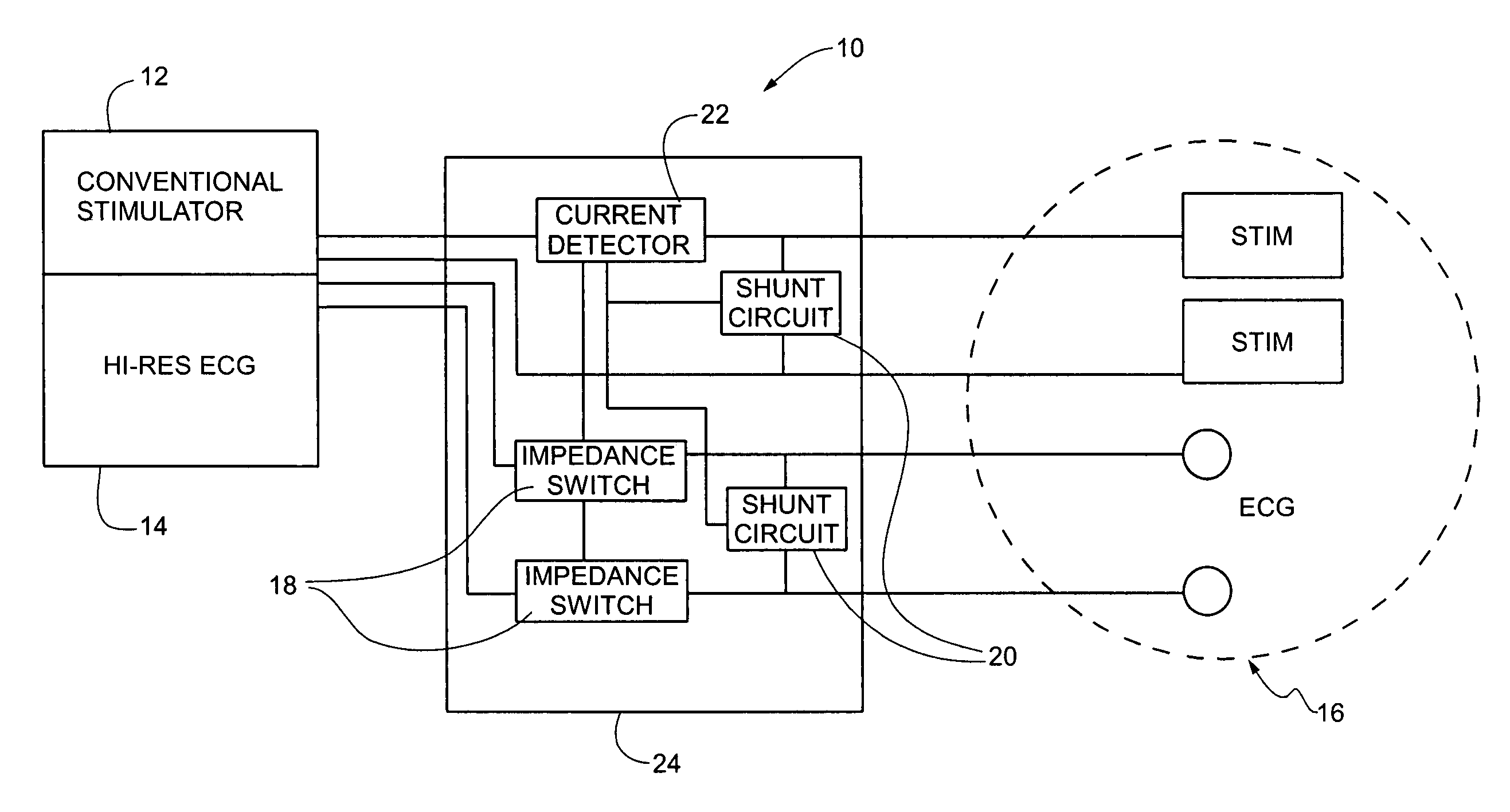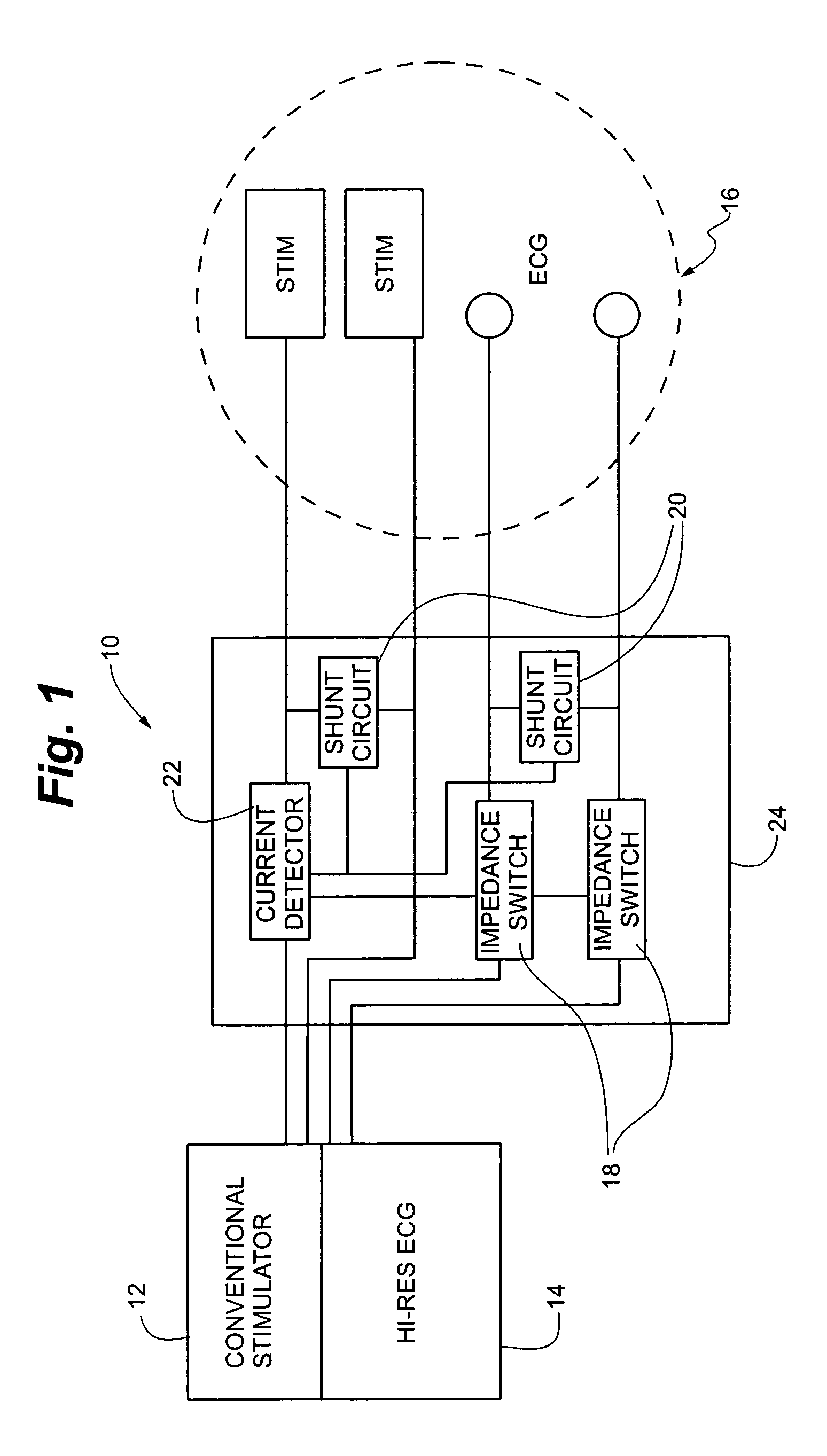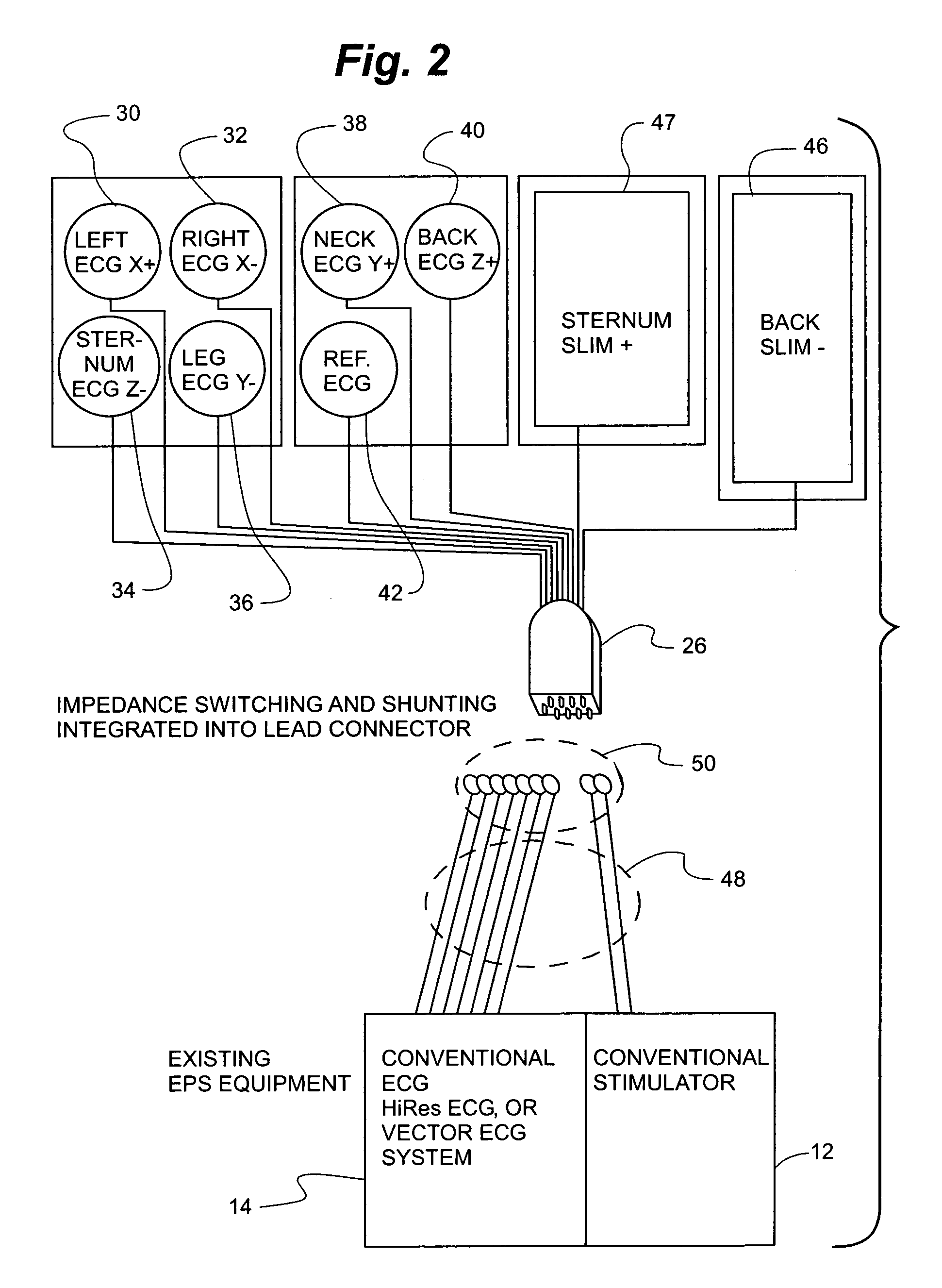Sensing artifact reduction for cardiac diagnostic system
a diagnostic system and artifact technology, applied in the field of detection of patients' susceptibility to cardiac arrhythmias, can solve the problems that the existing cardiac sensing circuitry is generally not designed to allow effective sensing of cardiac signals, and achieve the effects of enhancing utility and versatility, increasing stimulation energy, and determining a patient's susceptibility
- Summary
- Abstract
- Description
- Claims
- Application Information
AI Technical Summary
Benefits of technology
Problems solved by technology
Method used
Image
Examples
Embodiment Construction
[0024]Referring to FIG. 1, the sensing artifact reduction module 10 of the present invention is shown interposed between a conventional stimulator 12, an electrocardiogram (ECG) 14 and electrodes 16. Referring to FIGS. 1, 2 and 3, ECG 14 may include a conventional ECG, a high resolution ECG, a vector ECG system or other like systems. Conventional stimulators 12 are known in the cardiac stimulating and sensing arts.
[0025]Sensing artifact reduction module 10 generally includes impedance switches 18, shunt circuits 20, current detector 22 and housing 24.
[0026]Referring to FIG. 2, the sensing artifact reduction module 10 is depicted as integrated into lead connector 26. Lead connector 26 is connected to electrodes 16 via a plurality of leads 28. Electrodes 16 include left ECG X positive electrode 30, right ECG X negative electrode 32, sternum ECG Z negative electrode 34, leg ECG Y negative electrode 36, neck ECG Y positive electrode 38, back ECG Z positive electrode 40, reference ECG el...
PUM
 Login to View More
Login to View More Abstract
Description
Claims
Application Information
 Login to View More
Login to View More - R&D
- Intellectual Property
- Life Sciences
- Materials
- Tech Scout
- Unparalleled Data Quality
- Higher Quality Content
- 60% Fewer Hallucinations
Browse by: Latest US Patents, China's latest patents, Technical Efficacy Thesaurus, Application Domain, Technology Topic, Popular Technical Reports.
© 2025 PatSnap. All rights reserved.Legal|Privacy policy|Modern Slavery Act Transparency Statement|Sitemap|About US| Contact US: help@patsnap.com



